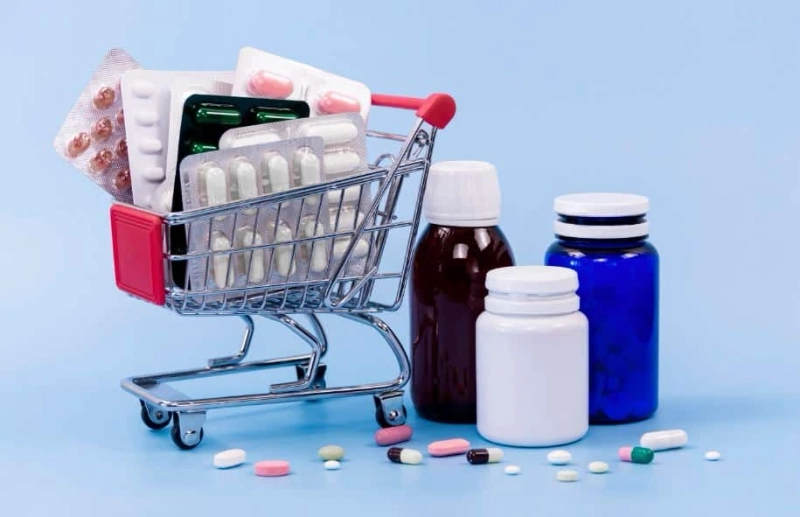Customers purchase at a pharmacy and present their best Rx pharmacy discount card. They are provided with a quote for the saving amount that they generate using the card for the purchase. Once they have the information, customers can decide whether they want to make a purchase or use the card to do so. Savings are realized at the point of sale and not later through a rebate process.
People for who it is appropriate
Most people receive few benefits from a free prescription discount card. Persons without insurance gain a lot of discounts. People with insurance may avoid high deductibles and get discounts on medications not covered by the insurance. People with good insurance may benefit as medication cards also discount OTC and pet medications.
How much can you save using a discount medication card?
It depends on many factors, the most important of which are the specific medications purchased and the issuer of the discount medication card. In good situations, as much as 85% of the retail price can be discounted. Accurate data is tough to obtain. However, informal studies have come up with an average discount of between 15% and 20% when using a discount medication card. In addition to the generic medications that are already less expensive, they tend to be discounted at a higher rate than the brand name equivalents.
Determining savings in advance of using the card
Can you determine the savings in advance using the medication discount card? Well, the answer is yes and no. The discounted rates keep constantly changing due to many other factors. It is quite impossible to determine the correct discount for a specific card when you make the purchase, receive a quote, and elect to use the card or not, or even to not make the purchase. You can also contact the local pharmacy and ask for a quote using the card. In addition, the medication saving card with a mobile app allows one to find the most affordable price after medication in the area.
How medication cards make money
There are three main ways an organization offering medication cards can make money. However, not all card issuers use all three ways to make money. Not all forms of making money necessarily come at the cardholder’s expense.
Monthly, Annual, or Enrollment Fees
The fees are charged to the customers directly. It can range from a few dollars to as much as $100/year. Not all cards charge these fees, and avoiding them is best.
Transaction fee
A small fee is added to the final purchase price every time they use the card. The fees come at the consumer’s expense; it is usually insignificant and minor relative to the savings the discount medication cards generate. All discount medication cards have some type of transaction fee.
Information sales
Information about the locations and medication purchases are collected while you use the card, and the data is sold to the marketers.
Medication cards’ interaction with insurance
Medication discount cards work independently of one’s insurance. One either chooses to use the insurance card or the discount medication card. You can present both the cards at the time of purchase, and the consumer can choose whatever card provides the more significant discount. You cannot use medication cards with insurance to lower the co-payments.
However, there are also co-payment assistance cards for people with insurance. These cards tend to be rare conditions for which the costs of the medications are extraordinarily high.
Why use a card when you have insurance?
There are many reasons why people with insurance may choose to use a discount medication card and not the insurance.
Deductibles
If your insurance has an annual deductible, you may use a discount medication card to receive discounts before reaching the limit.
Spending caps
If your insurance limits the maximum prescription spending, you may use a card after you reach the limit.
Better rates
With some medications and insurance, a person may find their out-of-pocket costs with a medication card are lower than the co-payments would be if they use the insurance.
Pharmacies that accept cards
Nearly all the pharmacies accept most discount medication cards. The exception to this rule is when a medical competing pharmacy chain uses a medication card. If you want to avoid this situation, it is best to select a card that is issued independently to one specific pharmacy.
Medication types covered by discount cards
It depends on the specific medication card. However, most cards cover a very high percentage of prescription medications, including generics, branded, OTC, and even pet medications.
Benefits of Rx Discount card
Rx discount card is a powerful tool for patients on plans with limited medication formularies, high copays, or high deductibles. They are handy for uninsured patients or those who are on insurance plans. The prescription costs could prevent patients from even starting therapy without the discount.
You should remember that the final price of your prescription depends on the price set by the pharmacy, not on the discount cards you are using. For example, if the prescription for a specific medication costs you nine dollars at one retailer and twenty dollars at another, even if you use the same discount card. If affordability is paramount, you may need to shop around a bit for the best price.
Choosing the best discount medication card
It is crucial to recognize that many cards are available, both bad and good. Out organization recommends the following criteria for choosing the discount medication card.
- The first thing you should do is not to pay for the card. Many free Rx cards are issued free of charge and provide the better or same discounts compared to the cards that charge enrollment or annual fees.
- Do not provide personal information for obtaining the card. Cards that are collecting your personal information, most of the time, intend to sell that information to marketers.
- Check to see that your preferred pharmacy is accepting the cards.
Conclusion
Best prescription discount card is an impactful part of the nuanced and complex healthcare landscape. All you need to do is stay tuned as we continue the conversation on navigating the useful tools and finding affordable paths towards therapy.




